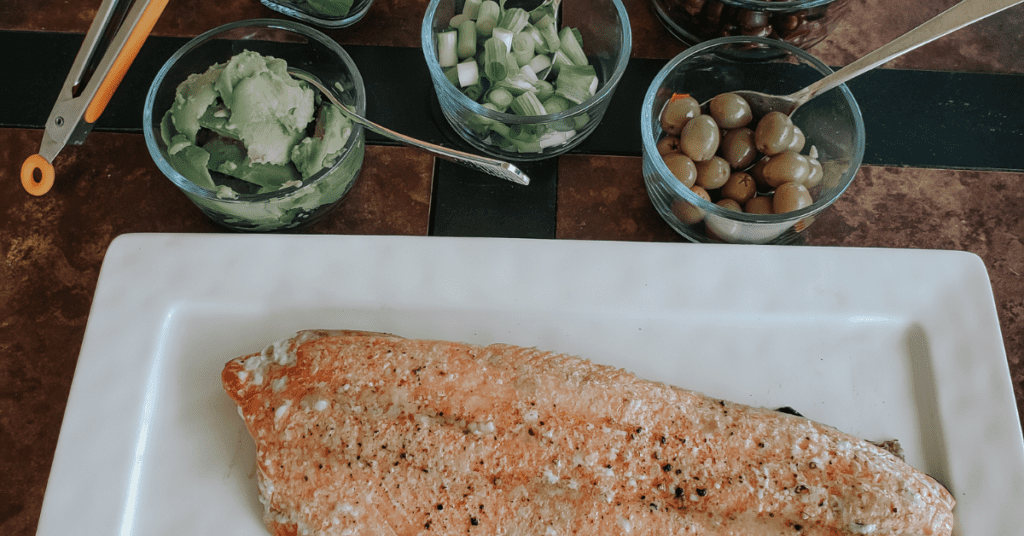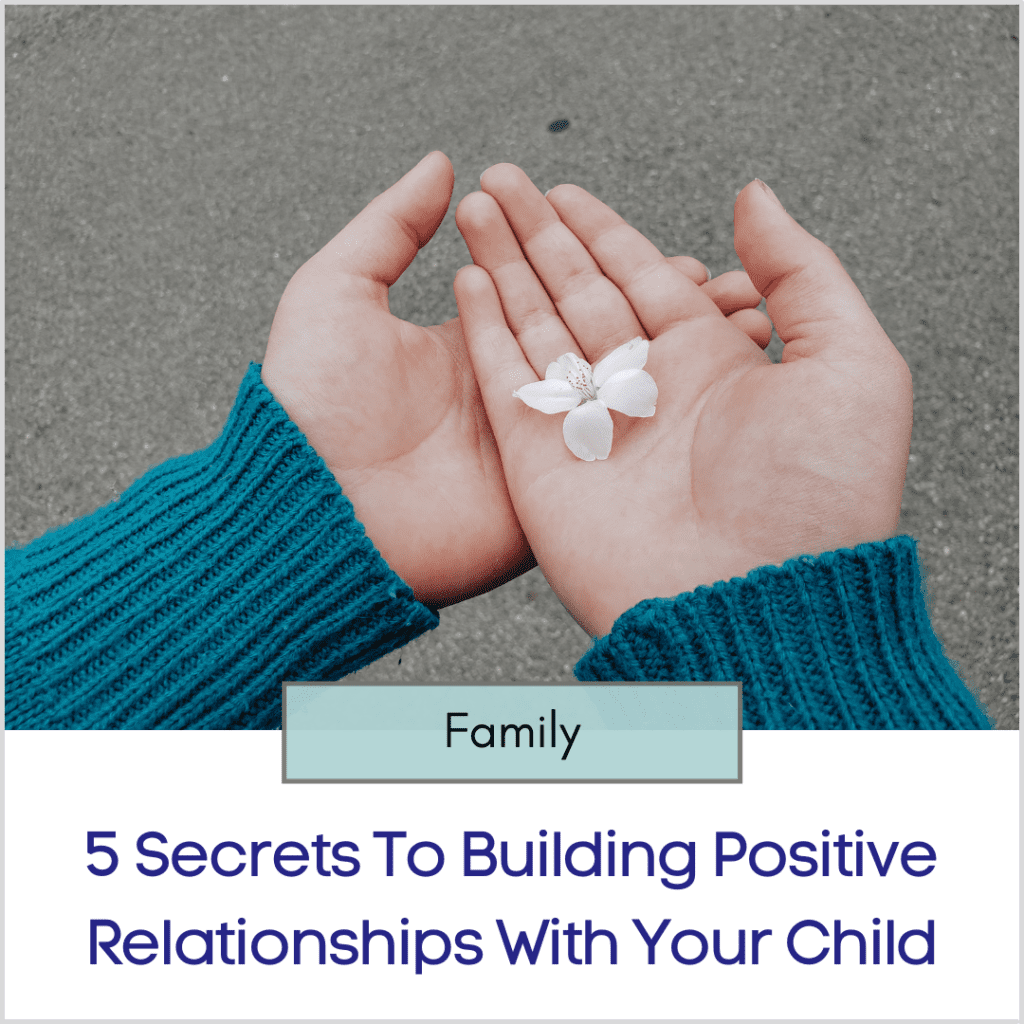
*Some of the links in this post are affiliate links. This means that at no additional cost to you, I will earn a commission for items that you purchase. For more information, please refer to my disclosure policy.
The Importance of a Healthy Diet
If there’s one thing I hear most when talking to other parents, it’s how to get kids to eat healthy because all parents understand the importance of a healthy diet especially when it comes to young, growing bodies.
It seems like there are so many families struggling with this challenge. From not wanting to sit still, to being incredibly picky, or simply refusing to eat any type of vegetables, moms and dads put in a lot of effort with their kids that seems to go nowhere sometimes.
Growing up, I ate healthy foods all of the time. It seemed like fruits, vegetables, lean meats, whole grains, and legumes were always available to me, and I was more than happy to eat them.
I will never forget the summers I spent at my aunt’s lake house running around all day catching buckets full of baby frogs and chasing butterflies. We were always snacking on fresh bing cherries and corn on the cob straight from the Farmer’s Market.
And in the mornings my aunt would serve us quiches loaded with fresh veggies. It was a completely normal way to eat in our eyes.
I didn’t even know other kids were growing up on boxed foods full of sodium, artificial ingredients, and preservatives until I was a teenager, and I realized just how delicious chips and sugary cereals were.
But it wasn’t long before I started to realize that I didn’t really feel all that well after eating junk food. I didn’t have the same energy. And I started putting on weight the more I hung out with friends and could drive to the gas station for snacks by myself.
I quickly went back to eating whole foods and feeling better than ever.
Did You Know?
- Real food doesn’t have an ingredients list.
- Real food is mostly found on the outer edges of the grocery store.
- And real food is only slightly more expensive by weight than processed food. According to a study done by Harvard, a healthy diet only costs $1.50 more per day than unhealthier choices.
So even though it’s harder to find coupons for whole foods rather than for boxed food-like products, the cost difference is minimal and the health benefits are immeasurable.
I was so blessed to be provided so many delicious, healthy choices by my aunt and all of my other relatives growing up. And I also know that there are many reasons why other kids are not always able to receive the same high-quality meals that we were.
Here are some of the additional challenges parents face when trying to feed their families:
- Food deserts are a huge issue in the United States. According to the USDA, 54.4 million people live in an area that has little to no access to healthy foods.
- Transportation to grocery stores as opposed to convenience stores
- Parents working more than one job and lacking the time to cook healthy meals
- Kids spend a lot of time with caregivers who may not provide healthy choices
- Parents not being properly educated on healthy lifestyles
- Misleading labels on processed foods
- The misunderstanding that processed foods are cheaper than whole foods
- It’s easier to give in to what kids want
- Kids relying on free and reduced meals in schools
As a teacher, I worked in several urban school districts with 100% of students who qualified for the free lunch program. So I saw firsthand the breakfast, snacks, lunches, and sack dinners that were sent home with my students.
It broke my heart.
Just like most other teachers in this country, I spent a ton of my own money filling in the gaps between what my students needed and what they actually had available. And this included healthy snacks.
Last year, I had a pregnant student in my 8th-grade class who would walk in every morning and hand me her school-provided yogurt cup or a well-known brand cereal bar that were both loaded with sugar because she knew I would hand her an orange, baby carrots, or a healthy breakfast bar instead.
She pretended like I was making her give up something she wanted at first, but she would smile at me in the front row as she ate her healthier snack each morning.
We have to do better for our kids.
None of us can fix everything alone, but we can all do something to help those around us.
And the easiest place to start instilling healthy eating habits is at home.
If you’re ready to take the first step, I’m happy to share my tips on how I get my own children to eat healthy foods regularly at home.
How to Get Kids to Eat Healthy
Learning how to get kids to eat healthy certainly comes with its challenges. But these 10 tips will help you get your kids to start making healthier food choices today.
1. Start Young
The younger your kids are when you start to introduce them to healthy foods the better. Babies and toddlers are happy to try anything, and they have not yet decided to be picky. Whatever you feed them when they first start eating solid foods, is what will naturally become a habit for them later.
2. Provide Variety
Kids get excited to try new things in life and that includes food. Make a habit of helping them pick out new foods to try at the grocery store and try the same healthy options prepared in different ways.
3. Use Repetition
If your child does not like a certain food once, it doesn’t mean that they will not like it again a week or a month later. Kids’ taste buds change, and the more often you prepare foods, the more likely they will grow accustomed to eating those foods.
4. Use Reverse Psychology
Reverse psychology works extremely well with younger kids and picky eaters. Putting a certain food on the adults’ plates only or even asking them if they are big enough to try a new food before the meal works wonders. Younger kids want to feel like big kids, and they will try something and possibly like it just to prove that they’re old enough.
5. Stock Up on Healthy Foods
People of all ages are more likely to grab a bag of chips over a bag of baby carrots when they’re both in the house. So regularly stocking up on healthy foods at the grocery store and only buying unhealthy foods on special occasions will ensure that your kids eat a healthy diet.
6. Give Choices
Kids are told what to do by adults all day long so they love it anytime they’re given choices. Ask them what veggie they would prefer for dinner or what healthy meals they would like to have later in the week.
7. Give Control
Kids also love it anytime they’re given control over something so allow them to make their own plates. This works especially well when there are several healthy options available to them, so no matter what they choose, they will be getting a well-rounded meal.
8. Lead By Example
Your kids are constantly listening to what you say, and even more importantly, watching what you do. If you want your kids to lead a healthy lifestyle, they need to see you setting that example daily.
9. Get Them Involved
By the time your kids are in upper elementary, they’re perfectly capable of helping you make grocery lists and prepare meals. Now is a great time to teach them the difference between whole and processed foods, the costs of foods per pound, how to read labels, and kitchen skills like knife safety, temperatures, and using appliances.
10. Allow Them to Develop Their Tastes at Their Own Pace
No matter how many times you introduce a new food or prepare it differently, there will be foods your kids simply don’t like. Allow them to develop their tastes at their own pace. It’s okay if they hate Brussel sprouts today if they are happily munching on spinach. And it doesn’t matter if they think papaya is disgusting if they want an apple at snack time.
Healthy Snack Choices
Preparing healthy meals is a great way to get your kids to eat wholesome foods, but their diets can easily get derailed at snack time. Here are 10 healthy snack choices to try in your home.
- Trail mix
- Greek yogurt-dipped fruit
- Fruit and cream cheese dip
- Date and nut bars
- Veggie chips
- Veggie sticks and dip
- Veggie sticks and hummus or baba ghanoush
- Veggie sticks and peanut butter
- Roasted chickpeas
- Protein balls
The best part of eating healthy snacks is getting your kids involved in making them. Both of my kids help me in the kitchen regularly.
It gets them off of technology, teaches them valuable life skills, and it gives them ownership over what they put in their bodies.
So make a grocery list as a family, pick up whole food ingredients, and spend an afternoon making a batch of healthy snacks together. When healthy snack choices are readily available in your home (and chips and cookies are not), your kids will eat them.
How to Make Healthy Meals
Learning how to make healthy meals at home doesn’t have to be a difficult, time-intensive process. And you don’t need to have professional culinary training to prepare meals.
Here are 5 tips for making healthy meals at home easier.
1. Buy Whole Foods
Whole foods are just like the name implies. They are whole. Foods are the healthiest when they’ve had little to no processing, and you can be assured that they’re whole if they don’t have a list of ingredients.
2. Limit Processed Foods
Processed foods are also just like the name implies. They have been taken from their original form and have been processed in a plant. Minimal processing can include freezing or canning, but highly processed foods have unhealthy ingredients added to them. If you pick up a box or a bag and it has a long list of ingredients (most of which you can’t pronounce), it’s highly processed and it’s definitely not your best option.
3. Make Plant-Based Foods Your Primary Focus
Plant-based foods like fruits, vegetables, legumes, whole grains, nuts, seeds, oils, and beans are the healthiest foods you can eat so load your plate up with these options as much as possible.
4. Make Animal-Based Foods Your Secondary Focus
When it comes to eating animal-based foods like meat, poultry, fish, eggs, and dairy, simply flip your plate. Having a smaller portion of animal-based foods and a larger portion of plant-based foods is a healthier way to eat. So think of your veggies and beans as the main course and eat meat as a side dish.
5. Buy Organic Non-GMO Products Whenever Possible
Organic, non-GMO products are more expensive than conventional options. However, pesticides are toxic chemicals created in a laboratory to make bugs infertile or to kill them. And genetically modified foods have been shown to harm humans. They’re even banned in most European countries because of it.
So ingesting these chemicals and GMOs over a lifetime will guarantee that you are being exposed to these toxic chemicals and health risks at every meal.
Whenever possible, avoid pesticides and GMOs to lower your risk of getting cancer, and check out the dirty dozen list to see which foods are at the highest risk for pesticide exposure.
Healthy Eating Hacks
The best healthy eating hacks are those that work well for your family. And each household is different, so try a few healthy eating hacks and see which ones work best for you.
Here are 15 healthy eating hacks to try out in your home.
- Search for healthy recipe ideas
- Plan a menu ahead
- Make a grocery list and stick to it
- Try one new healthy food per week
- Don’t shop when you are overly tired or hungry
- Buy mostly whole foods
- Limit your purchase of processed foods
- Wash and cut up fruits and veggies for grab-and-go snacks
- Make batches of healthy snacks together
- Teach your kids how to prepare healthy meals
- Give kids choice and ownership over what they eat
- Make plant-based foods the main dish and animal-based foods the side dish
- Eliminate sugary drinks
- Don’t wait until you are starving to eat
- Make food fun. Create bars and bowls with many healthy options.
My favorite healthy eating hack by far is #15. We regularly prepare bars and bowls in our home, and the kids love them.
Basically what we do, is prepare one fish, lean meat, or other protein and lots of veggies, grains, and legumes to choose from so that everyone can build their own custom dish.
Examples of bars and bowls are:
- Potato bar
- Salad bar
- Taco bar
- Meat, cheese, and veggie bar
- Salmon bowls
- Tuna bowls
- Quinoa bowls
- Hummus bowls
Lastly, I read an awesome book on this topic over the summer that I want to share with you. It’s an easy read, and I highly recommend it to anyone who’s ready to learn more about our bodies and just how important a healthy diet truly is.
Love What You’re Seeing So Far?
- Enjoy community support
- Never miss a life-changing post again
- Get immediate access to the free resources library
- Be the first to know about giveaways
What are your best tips for how to get kids to eat healthy? Share your thoughts in the comments section below.








So many great tips in here! I definitely agree with stocking up on healthy options. If that is the option there is, that’s what will be eaten. Growing up we had no candy, chips, or pop in the house we were allowed to eat and I’ve always been grateful for that. I ate a lot healthier for it.
That’s so great that you grew up eating healthy and that you still do. It’s such an important thing to instill at a young age.
Great tips. I don’t have kids but have always been around little ones and it’s amazing how picky they can be!! I love your ideas of giving them choices and making it fun!
So true! I knew I didn’t want my kids to grow up being super picky and not willing to eat healthy. All of the tips in my post I personally use and have found success with.
There is more knowledge and insight in this post than a TED talk. Hats off awesome! I love recommendations 2, 3 and 6, but reverse psychology is my favourite hack. I try to use it on my daughter Alice who is only 4 but already reading books on how to use reverse reverse psychology on her parents. Recently tried adding beetroot to her Moms and my plate to great effect.
“What is that Daddy? ”
“Beetroot.”
“It’s red and pink.”
“Yes, I know.”
“Can I have some? It looks like princess food. I am a princess. I love pink.”
“Of course you are. Here you go. Have some beetroot. “
I love it! Thank you so much. The princess food gets them every time.
I’m not a parent but this was really informative and I’d definitely want to start them early when it comes to eating healthier. But also teaching them that a treat every now and again is absolutely okay!
I agree with you. Never allowing treats just makes them want it more and then they will overeat them when they can. We call certain types of food always foods and sometimes foods in our house, and the kids are very responsible with their choices because they are allowed to make them.
This is such an interesting topic. Its something that so many parents struggle with over time so these tips will definitely help so many families. I agree you should definitely start young and also make it fun. Whether that’s including them in the making process or creating food in different shapes.
Yes! Cutting foods in different shapes is a great way to get kids to eat them.
Hi Brooke. What an informative post. My parents must have done a pretty reasonable job on the food front – about the only things I don’t like are garlic and … marrow. Both of which I can happily do without 🙂
I do appreciate how easy it is for kids to get into the habit of eating poorly if they are not given the guidance that they need from their parents. Often, I suspect, it is the case that the parents eat poorly and then pass on their eating habits to their children. That and the fact that peer pressure at school will also have an influence on preferences.
That’s so good to hear. Your parents did a great job if you eat most foods. You are absolutely right about the kids at school influencing each other’s eating habits. My daughter loved avocado until a kid said he hated it at school, and she refused to eat it for weeks. We just let her have her own opinion and didn’t push it, and now she’s back to loving it.
Great tips. I don’t have kids yet, but I totally agree about introducing healthy foods while they are young. Repetition also works! When I was a kid, my mom always prepared meals with vegetables. I was not too fond of some vegetables’ bitter taste, but I guess I got used to it. Now, I always try to include veggies when preparing our meals too.
Your mom sounds like a smart lady. You do get used to new foods after trying them a few times and even start liking them eventually. Great comment!
I love the idea of giving choices. We don’t have children ourselves, however, I am ‘that aunt’ that enjoys spending time with the nieces and nephews whenever I can. I learned early on that trying to tell them to eat something healthier always fell short, but if I opened the fridge and listed off all the fruits and vegetables that I have available, they usually get excited over something. It also helps that my husband and I don’t usually keep a lot of sweets and unhealthier options in the home. So, they don’t see an unhealthy alternative 9 times out of 10 to distract them from the healthy options.
Exactly! Kids will always get excited about something if you offer them choices.
This is fantastic. It’s one of the best health posts I’ve read for a while. So informative and so RIGHT!! Thank you for sharing!
I really appreciate your kind words. So happy that you really enjoyed reading it.
Wonderful article with lots of great tips, Brooke! We eat organic, whole foods in our house, too. I’m not even tempted by candy and many processed foods due to years of following my interests in health, nutrition, gardening , and herbalism. I’ve been indoctrinated by the books I’ve read, lol. When I see something like a bag of colorful candy or other junk food, I just see unhealthy sugar, dyes and chemicals. It’s not food to me, and it’s not attractive. Although I know candy & junk food is still enticing to others, so slowly adding more healthy options without making any food taboo can help win over picky eaters. I love your tips for getting kids to try new foods, too. It takes about 9 times for a child to see a new food before the food becomes familiar enough that they are willing to try it.
9 times! That’s good to know. It sounds like we eat very similarly (although I do still love candy) but you are so right about just thinking about all of the junk in junk food. Even my kids read labels and limit themselves when they get chips or something on a special occasions.
I love this handy list, especially since you cover some cause and effect reasons behind poor eating and some easy ways to start changing that. I ate vegetables and fresh foods growing up; my family has had a garden for as long as I can remember and we have always bought as much organic as possible. While we do eat things like candy and s’mores, I still love yogurt with granola or carrots in homemade ranch dressing as much as a chocolate bar. 🙂
Same! I still eat sweets occasionally too, but I am just as happy with healthy food so it’s only for special occasions. And gardening is a great way to get kids involved in a healthier lifestyle.
Perfect information for growing a healthy child. Fortunately, Diabetes in our family tree helped us to create a whole food diet that everyone could enjoy. Keeping fresh fruits and veggies ready for little ones to grab right out of the fridge is easy. Plates of small cut up choices satisfy and what one child doesn’t like the other one will. Watching children enjoy healthy foods is a pleasure and not once have I felt the cost was too expensive or the preparation was too much work or any food was ever wasted. If I was the lucky adult to find fresh fruit and veggies left over after the kids were done, then I enjoyed the same nutrition and what was most important; our everyday meals were spent eating and laughing together. The only times we had any unpleasant
meal situations was the occasional spilled milk. But our motto: Nobody cries over spilled milk, saved the day! Clean it up without fussing and pour another glass. Meals should be fun! Thanks Brooke, keep the wise counsel coming!
I love how you mentioned that the cost and the preparation never felt like too much to you because of all the joy you got out of seeing your family getting proper nutrition. I feel the same way watching my kids. The other day they were raving when I sauteed beet greens and both of them asked for more. Such a cool thing to see.
Love this!! My son is starting to get picky about food so it’s been hard to get all the goodness in him. Thanks for the tips!
Yes! I hope it helps. They definitely get pickier as their personalities develop more, but don’t give up momma. You’ve got this!